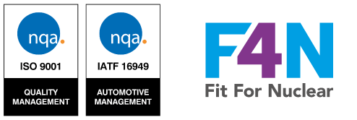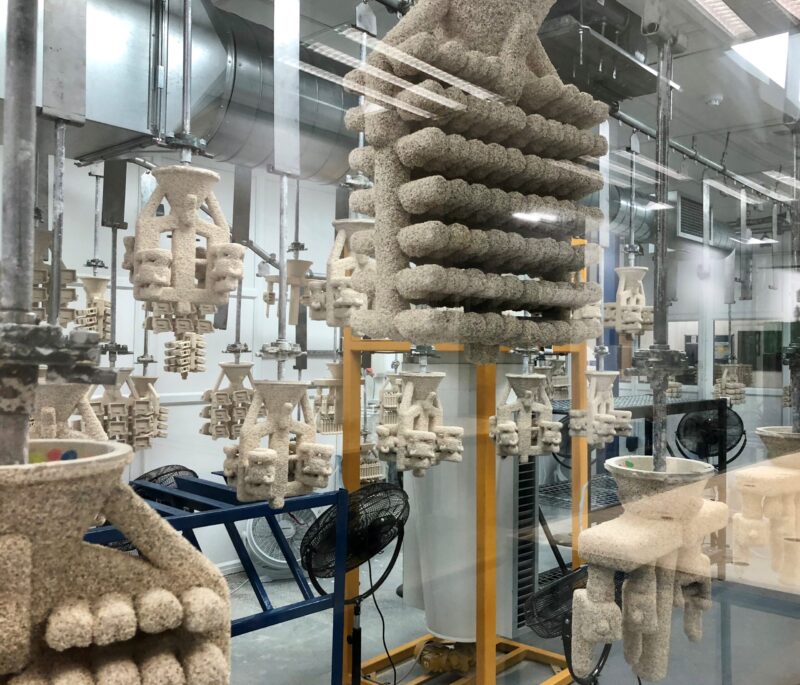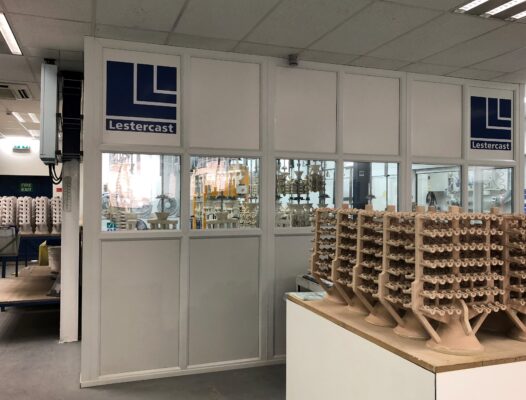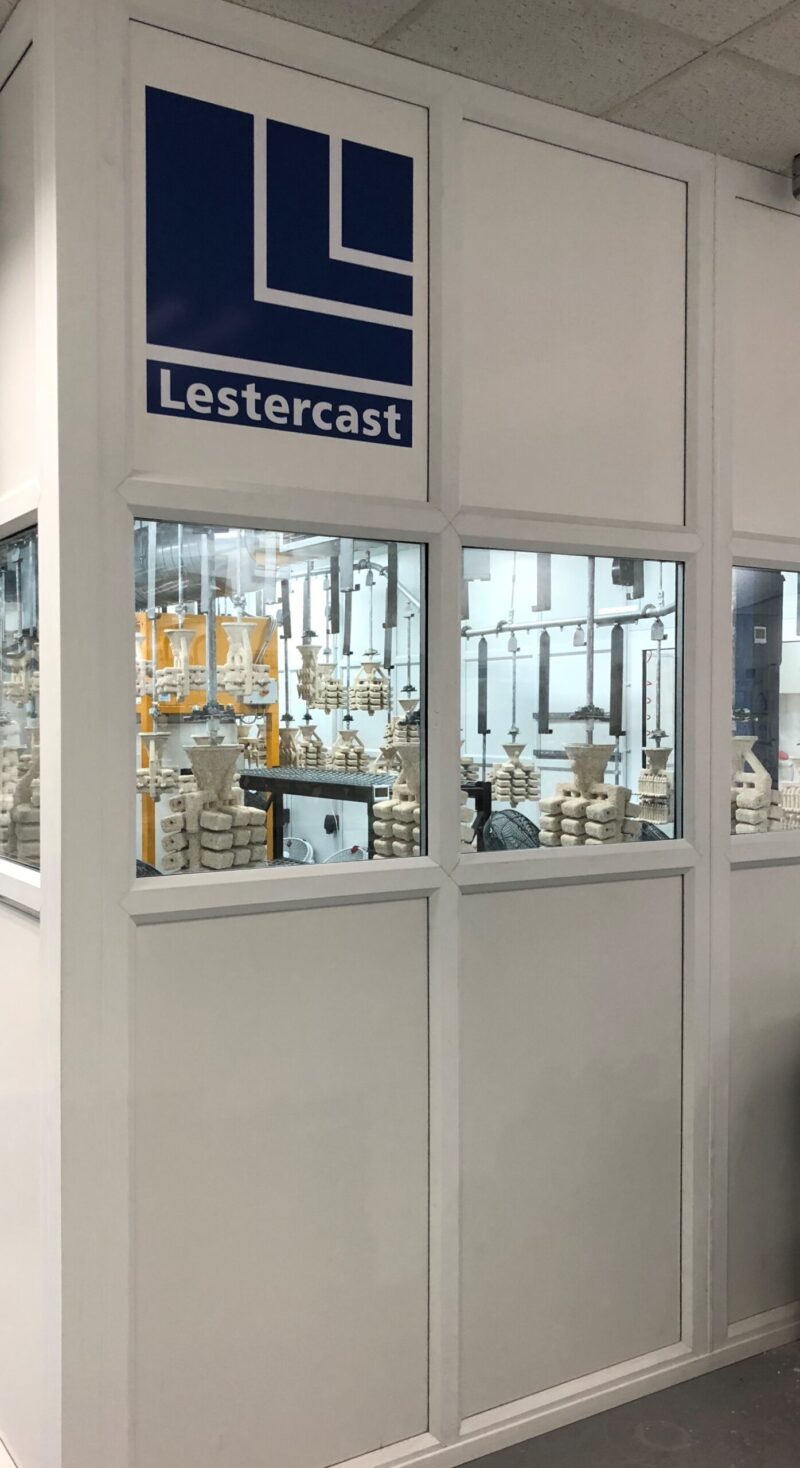Within the past few weeks, here at Lestercast, we have invested in our Investment Casting and transitioned a significant stage of our processes to a safer, cleaner and more environmentally friendly method.
We have now modified our ‘Investing’ process which previously involved an Ethyl Silicate, alcohol-based shelling system to a water-based one which will inevitably increase efficiency, reduce costs, decrease the environmental impact of our business and ultimately reduce the carbon footprint, in addition to improving the quality of our investment castings as a whole.
Investment Casting
The Investment Casting process is one that uses wax patterns which are produced by injecting wax into a metal ‘die’ in order to achieve the correct shape of the desired component.
Following manufacture of the wax patterns, these are then assembled onto a wax tree before being coated with a liquid ceramic slurry and finally covered with refractory material in order to create the ‘shell’ mould.
Investment Transition – What has Altered?
As part of the production process and in order to manufacture the finished product, the ‘Shelling or Investing’ stage of the operation is the one process that has received a significant makeover at our Lestercast facility.
The process previously used to produce the ‘back-up’ shell coats was an Alcohol based slurry system, using Ammonia as the catalyst for drying the moulds – this process has now been fully changed to a water-based system.
A purpose-built temperature and humidity controlled drying room has been installed to envelop the exiting mould conveyor. The drying room itself, whilst fully enclosed to create the perfect drying conditions, has been designed with glass partitioning to allow full visibility for operators and visitors alike to view the whole process.
Within the room a fan-based drying system and dehumidifier have been integrated which allows the moulds, at each stage of their coating, to fully dry out prior to the de-waxing process.
The investment transition process underwent a structured trial period in which each stage of the new operations were fully evaluated, examined and scrutinised to ensure all elements were carried out correctly.
The Benefits of the Investment Transition in the Shelling Department
The benefits of this are of course predominantly health, safety and environmentally based but will impact not just the work environment in a positive manner but the final product also.
Using an alcohol based slurry would previously mean that fumes and emissions would be a by-product. With this now fully removed from our processes, the staff now therefore work in a cleaner, safer and fully contained environment and in conjunction with the assistance of the local council are fully compliant with all regulatory policies.
It’s envisaged that the overall processing time will be reduced from start to finish of the shelling process providing additional capacity within the department.
In addition, the water based ceramic material is a much stronger product allowing the number of coats to be reduced on certain product sizes, in turn providing a reduction in material costs.
Martyn Whelpton, Technical and Operations Manager said:
We are delighted with the results that have been made; this type of transition is never easy. The installation work was planned in such a way that disruption to production was kept to a minimum and completed over a number of weeks to a very tight schedule.
The new enclosure has transformed the overall appearance of the department whilst providing us with a facility that in turn will bring both efficiency and quality improvements alike.”
For further information on our Lost-Wax-Process, please take a look at the attached diagram.





